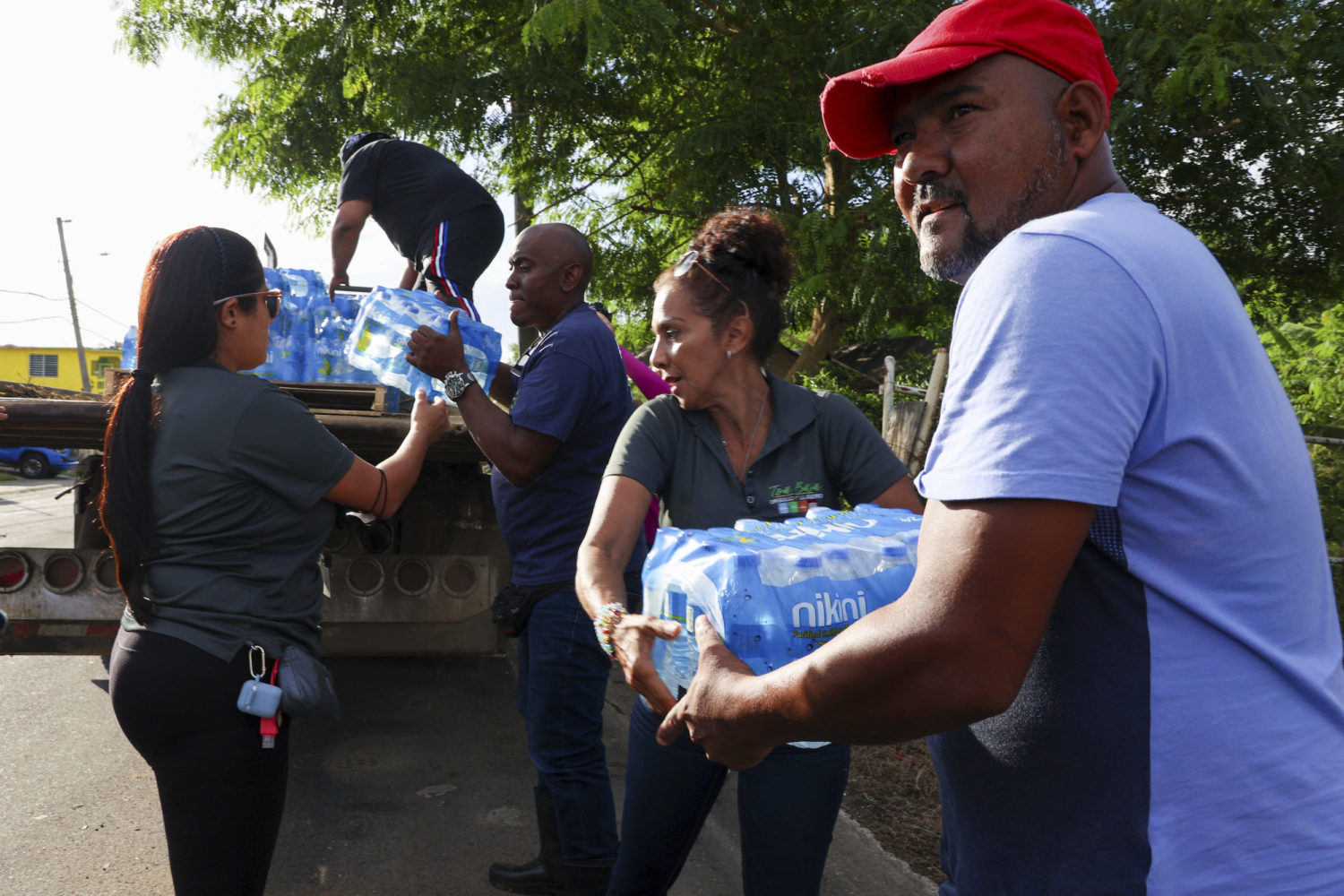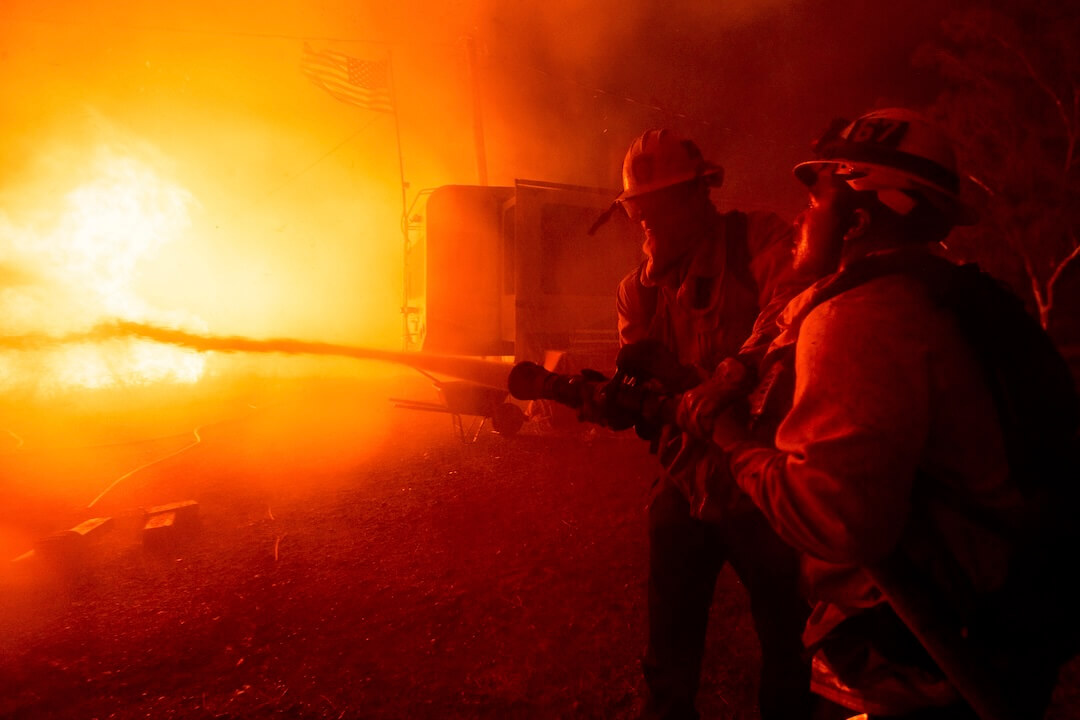 Covering COVID-19 is a daily Poynter briefing of story ideas about the coronavirus and other timely topics for journalists, written by senior faculty Al Tompkins. Sign up here to have it delivered to your inbox every weekday morning.
Covering COVID-19 is a daily Poynter briefing of story ideas about the coronavirus and other timely topics for journalists, written by senior faculty Al Tompkins. Sign up here to have it delivered to your inbox every weekday morning.
The one thing I know from having been around hurricane and disaster zones for decades is that a lot of people are going to need help and the help that does the most good is cash.
The last thing charities need is donations of used shoes, unused medicine and out-of-date cans of food. I have seen it all donated with good intentions.
Donating “stuff” means somebody has to sort through it and figure out what is useable and what is not. Used clothing ends up in piles, gets wet and ultimately creates more problems. Charities do not immediately need toys and other such things.
With money, charities can buy in bulk. Shipments come in orderly deliveries that are easier to stack, store and distribute. Charity Watch says, “Charities often receive truckloads of non-cash items, such as bottled water, directly from companies, which they can transport and distribute more efficiently than piece-meal donations from individuals. Visit a charity’s web site to see if it is requesting specific items. If not, identify a financially efficient charity and donate cash.”
When we donate cash, however, we naturally want to know the money is going to be used to help people. Charity Watch offers this advice to help you do the most good with your donations for hurricane victims:
(1) Keep Your Emotions in Check: Emotions are not intrinsically good or bad. It is how we wield them in the world that determines whether they act as an asset or a hinderance. Allow your compassion for people or animals, sadness in the wake of a tragedy, or anger at injustice, function as catalysts for giving rather than as ends unto themselves. Then, take pause, and use your mind to make good decisions about how much to give, and to whom to direct your donations.
(2) Don’t Make Millionaires Out of Disaster Victims: OK. Millionaires is a bit hyperbolic. The point here is that we do not want to collectively flood one victim or a small handful of victims with a large volume of donations while other victims go without. A victim who is interviewed on tv or whose story goes viral online may be bombarded with sometimes hundreds of thousands of dollars in donations, while other victims of the exact same tragedy receive nothing due to their individual stories not being publicized. Instead, identify a charity that is efficiently distributing aid to victims so that all those affected will have a better chance of receiving the help they need.
(3) Avoid Gift Tax: Giving directly to individual victims of a tragedy rather than through a charity is not tax deductible and, in fact, may cause your taxes to go up. Donations valued at more than $15,000 may be subject to Gift Tax under IRS rules. (Note: The IRS’s ceiling for Gift Tax is adjusted annually, so visit www.irs.gov for current limits.) If you are a particularly fortunate and generous person with the means to make large donations, avoid Gift Tax by donating to a qualified charity rather than sending large gifts directly to individual victims.
(4) Take a Tax Deduction: Whether or not any given donor can take a tax deduction is based on that donor’s specific tax situation, such as ability to itemize rather than take the standard deduction; total adjusted gross income relative to the amount of donations made in a given tax year; and other factors. If you are eligible to take a tax deduction for your charitable contributions, be sure to direct them to charities that have the ability to accept them since minimizing your taxes frees up more funds for you to donate. Generally, nonprofits in good standing with the IRS that are organized as 501(c)(3) public charities under the tax code will state that your “donation is tax deductible as permitted by law.” Confirm this directly by using the IRS’s online tool. Donations to other types of non-profits, such as 501(c)4 organizations, are generally not tax-deductible.
(5) Know When Enough is Enough: Just as we shouldn’t flood individuals with more donations than they need, this same logic applies to charities. A charity may use a disaster as an opportunity to raise funds for its other charitable programs even after it has surpassed the amount it can reasonably use to aid victims of a specific tragedy. This is ok, provided the charity makes donors aware of how their donations may be used. But donors who feel strongly about wanting to provide aid for the victims of a specific tragedy should pinpoint a charity that has not already raised more than it can reasonably spend for this purpose. Charities often post fundraising goals on their websites so that donors can see how much remains to be raised for a specific disaster.
(6) Don’t Give to the First Charity That Asks: The first crowdfunding request, email, or targeted online ad you see from a charity requesting funds to aid victims of a tragedy is not automatically the most deserving of your donation just because it happens to be the first one you noticed. Put in at least as much effort into selecting a good charity as you would into selecting pizza toppings. Visit a charity’s website to learn about the types of aid it is providing, and seek out third-party sources that can tell you how efficiently it is operating.
(7) Support Charities That Are Already Invested: Particularly after natural disasters, charities with no expertise or experience in providing disaster aid come out of the woodwork to take advantage of the generosity of vulnerable donors. Even well-meaning charities may end up siphoning donations away from those that are more experienced, skilled, and staffed for the task at hand. Give to charities that know what they are doing in a crisis and have existing infrastructure in place to more efficiently and effectively distribute emergency aid to victims.
(8) Donate After The Dust Has Settled: Victims need emergency assistance after a disaster. Insofar as donations for urgent aid are lagging, by all means, donate sooner rather than later. However, victims have longer term needs as well. If you did not donate quickly in response to a particular tragedy but still want to help, pinpoint a charity that is working on longer term needs. In the short term, victims of a disaster may need tents, blankets, bottled water, and food. In the longer term they may need things like desalination equipment, micro-lending, safe transportation routes, and education funding. It is never too late to help. Pinpoint an unmet need and donate.
(9) Donate to One Charity, Not Many: It is better to direct your donations to one or two charities rather than sending smaller donations to a long list of them. Even the most highly efficient charities have fundraising as well as overhead costs related to obtaining and processing your donation. This overhead eats into your donation. By making a larger gift to a single, financially efficient charity, rather than sending $20 to ten different charities, a smaller portion of your donation will be used to cover overhead costs.
Here’s more from Charity Watch to guide your giving:
- 5 Tips For Avoiding Charity Frauds & Scams
- 10 Tips For Giving In a Crisis
- How “Psychic Numbing” Stops Us From Giving
- Crowdfunding: The Wild West of Charitable Giving
More advice from the FTC
The Federal Trade Commission offers advice on disaster response charity giving:
- If you get a request to donate on social media, research the organization yourself before you give. Don’t assume that charity messages posted on social media are legitimate. Check out the charity on the Better Business Bureau’s (BBB) Wise Giving Alliance, Charity Navigator, Charity Watch, or Candid. If the message was from a friend, ask them if they know the organization themselves.
- Be cautious about giving to individuals on crowdfunding sites. If considering crowdfunding, it’s safest to give to someone you personally know and trust, and to review the platform’s policies and procedures. Keep in mind that while some crowdfunding sites take measures to vet postings for help after a disaster, others don’t.
- If someone wants donations in cash, by gift card, by wiring money or cryptocurrency, don’t do it. Pay by credit card, which offers more protections.
- When texting to donate, confirm the number with the source before you donate. The charge will show up on your mobile phone bill, but donations are not immediate.
How up-to-date is your building code?
As a hurricane bears down on the eastern Gulf of Mexico, people in its path wonder if their homes are up to the challenges ahead. Disasters have a way of pushing communities to adopt new building codes, but plenty of places that you might think would have strong codes do not. The Department of Homeland Security has a site that lets you enter your address to see how up-to-date your building codes are.
The death of the ‘starter house’
There was a time when the normal progression of American homeownership began with buying a little house, fixing it up, living in it a while, then selling it and using the gains to buy a bigger, better house. But The New York Times says they don’t make starter houses like they used to:
Nationwide, the small, detached house has all but vanished from new construction. Only about 8 percent of new single-family homes today are 1,400 square feet or less. In the 1940s, according to CoreLogic, nearly 70 percent of new houses were that small.
That reality conflicts with demographics. The typical American household has fallen in size for decades, even as the typical home has grown larger. Downsizing baby boomers and young adults who delay children figure to drive demand for smaller homes. So will increasingly diverse young buyers who have more debt and less access to family wealth.
It is funny how often my wife and I mention our starter houses with fondness many years later. I could mow the lawn in 15 minutes and paint the whole exterior in one day.
Journalists use a drone to chase down scammers
I am a fan of WBBM-Chicago’s Dave Savini but this time he and his CBS 2 investigative colleagues have set a new bar. They heard about scammers outside the White Sox stadium who were riding scooters around the expressway and demanding $40 cash to allow motorists to pass into parking areas. And yes, people thought they were real parking attendants, so they paid up.
Savini and his team have confronted similar scammers before so they knew the scammers would scatter as soon as the camera showed up. This time, CBS planted GoPros around the area and hovered over the scammers with a drone. They caught the highway robbery in action. And, when police tried to stop the shakedown but were helpless when the thieves scootered away into traffic, the journalists hovered over the criminals.
Watch the story here along with some details that did not air about how the team did their work. By the way, the anchor is Brad Edwards, who is himself an award-winning investigative journalist, which is rare and refreshing in local TV.
Why are we tipping touch-screen service?
There was nobody to take the order when I was paying for lunch at Panera the other day, so I used a kiosk. As I hit save on the computer screen, it asked me if I wanted to tip the server … who I would not be interacting with.
A recent study says Americans are tipping less now than we did before the pandemic. Part of it seems to be linked to inflation. CreditCards.com reports the result of the survey of 2,600 adults:
- Men versus women on restaurant tipping: Men and women both give a median tip of 20%, but the mean is a little higher among men (22% versus 20% for women).
- Men versus women on grooming and delivery services: Women tip more often in both cases – 70% said they always tip their stylists and only 60% of men said they always tip for grooming services. Sixty-two percent of women always tip food delivery people while only 52% of men said they do.
- Suggested tip amounts have some effect, but not on most: Among people who have encountered suggested tip amounts (for example, at a coffee shop, a food truck, a taxi/rideshare, etc.), most (62%) say their tipping habits are about the same. Twenty-six percent are inspired to tip more (7% said much more and 18% somewhat more), while 12% tip less as a result (5% said much less and 7% somewhat less).
- Northeasterners and Westerners tip more when presented with tip suggestions: Thirty-one percent of Northeasterners and 31% of Westerners tip more when they are presented with pre-filled tipping options, compared with 24% of Southerners and 20% of Midwesterners.
- Tipping favors grooming and food delivery services: Among people who use these services, 66% of people reported always tipping for grooming services and 57% reported always tipping for food delivery services.
We’ll be back tomorrow with a new edition of Covering COVID-19. Are you subscribed? Sign up here to get it delivered right to your inbox.










